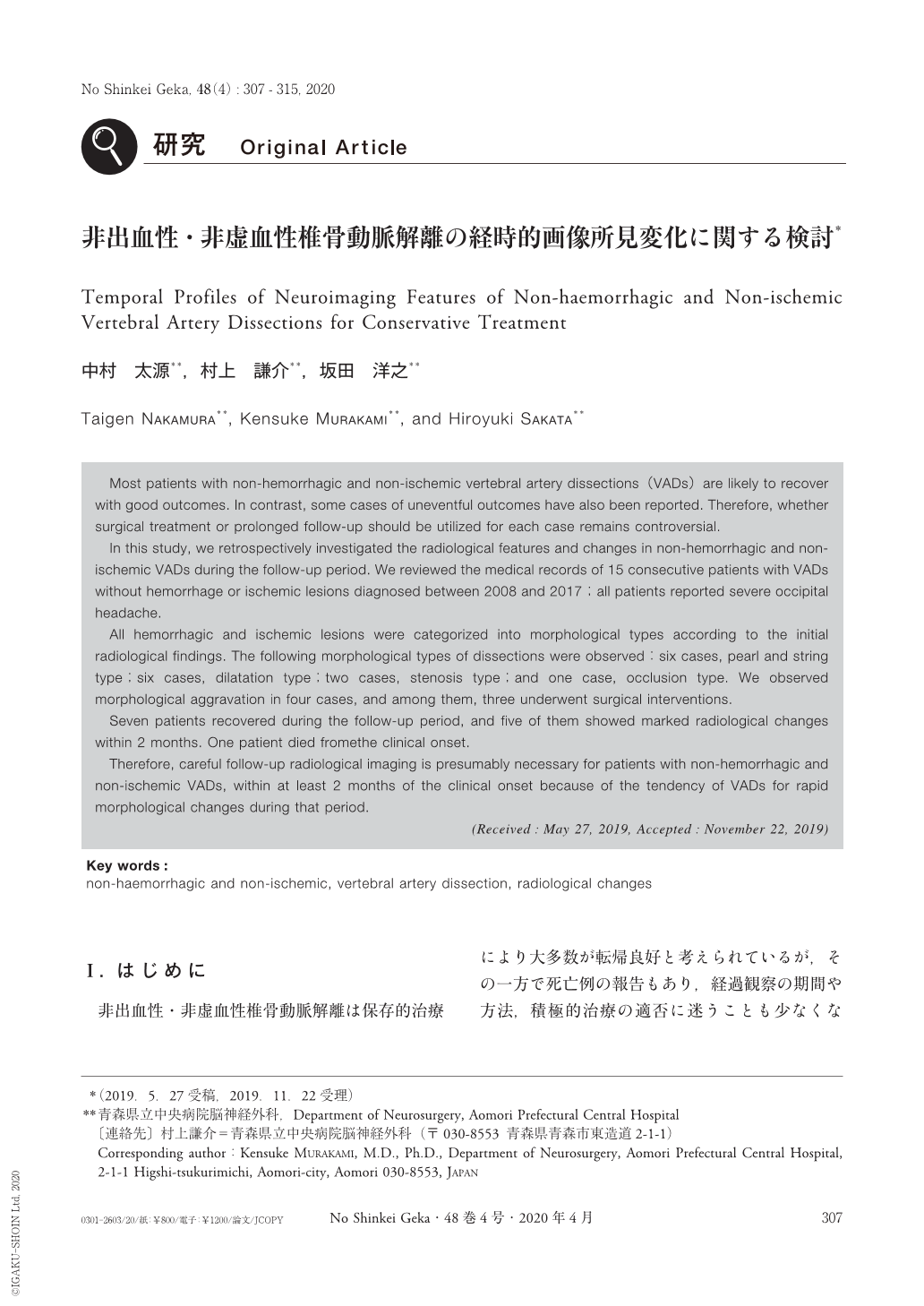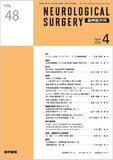Japanese
English
- 有料閲覧
- Abstract 文献概要
- 1ページ目 Look Inside
- 参考文献 Reference
Ⅰ.はじめに
非出血性・非虚血性椎骨動脈解離は保存的治療により大多数が転帰良好と考えられているが,その一方で死亡例の報告もあり,経過観察の期間や方法,積極的治療の適否に迷うことも少なくない5,13).今回われわれは,非出血性・非虚血性椎骨動脈解離の自然経過および画像における形態変化の特徴を明らかにするため,自験例の保存的治療,経過観察期間における画像所見の変化について分析した.
Most patients with non-hemorrhagic and non-ischemic vertebral artery dissections(VADs)are likely to recover with good outcomes. In contrast, some cases of uneventful outcomes have also been reported. Therefore, whether surgical treatment or prolonged follow-up should be utilized for each case remains controversial.
In this study, we retrospectively investigated the radiological features and changes in non-hemorrhagic and non-ischemic VADs during the follow-up period. We reviewed the medical records of 15 consecutive patients with VADs without hemorrhage or ischemic lesions diagnosed between 2008 and 2017;all patients reported severe occipital headache.
All hemorrhagic and ischemic lesions were categorized into morphological types according to the initial radiological findings. The following morphological types of dissections were observed:six cases, pearl and string type;six cases, dilatation type;two cases, stenosis type;and one case, occlusion type. We observed morphological aggravation in four cases, and among them, three underwent surgical interventions.
Seven patients recovered during the follow-up period, and five of them showed marked radiological changes within 2 months. One patient died fromethe clinical onset.
Therefore, careful follow-up radiological imaging is presumably necessary for patients with non-hemorrhagic and non-ischemic VADs, within at least 2 months of the clinical onset because of the tendency of VADs for rapid morphological changes during that period.

Copyright © 2020, Igaku-Shoin Ltd. All rights reserved.


